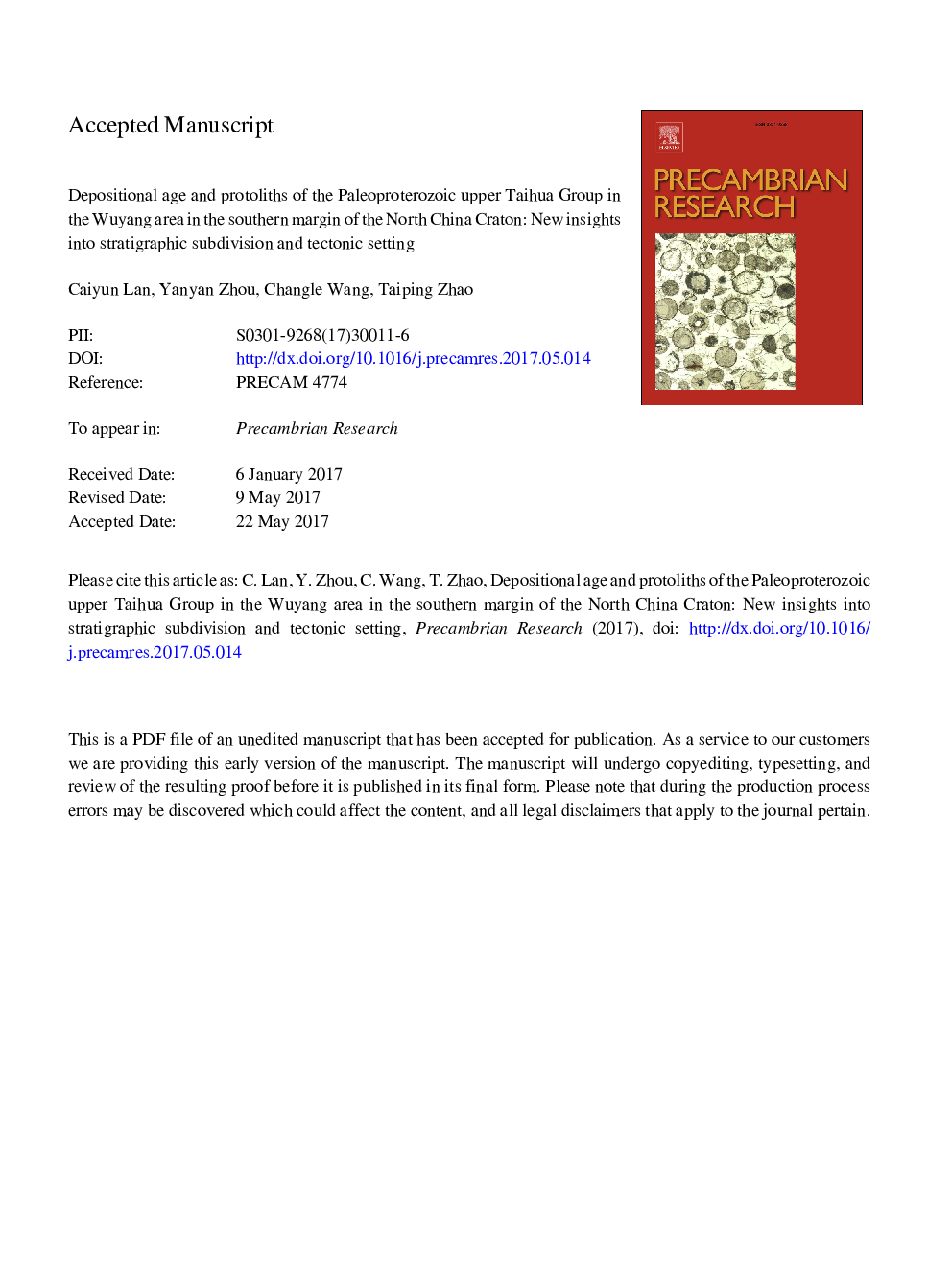| Article ID | Journal | Published Year | Pages | File Type |
|---|---|---|---|---|
| 5784747 | Precambrian Research | 2017 | 64 Pages |
Abstract
The Paleoproterozoic upper Taihua Group is widely exposed in the southern margin of the North China Craton (NCC). Stratigraphic correlation of the upper Taihua Group in the region remains unclear due to the inconsistent variation of its depositional ages, lithology assemblages and sedimentary characteristics at different locations. Here we present systematic whole-rock major and trace element, Nd isotope and zircon U-Pb age data for the upper Taihua Group from the poorly studied Wuyang area. Protoliths of the upper Taihua Group in this area are a suite of sequences containing mafic volcanic rocks, chemical sedimentary rocks, pelites and arenites. The depositional age of the upper Taihua Group in the Wuyang area is well constrained from 2470 to 2158 Ma. Comprehensive lithological comparison of protoliths of the upper Taihua Group in the Wuyang, Lushan, Xionger'ershan and Xiaoqinling areas shows striking lithologic similarity among them. Two widely exposed strata, the iron-rich and carbonaceous strata in these areas, can be considered as the lithological markers. In combination with the previously dated 2.3 Ga maximum depositional age of the carbonaceous stratum in the Lushan area, we propose that the upper Taihua Group in the whole region can be subdivided into the 2.47-2.3 Ga Iron-rich Formation and the 2.3-2.15 Ga overlying Carbonaceous Formation. Additionally, two types of meta-mafic volcanic rocks in the Iron-rich Formation from the Wuyang area are identified. One is characterized by depletion in Nb, Ta and Ti, enrichment in LREE and positive εNd(t) values (+0.9 to +1.3), similar to that of arc-type basalt. The other have nearly flat REE patterns and higher εNd(t) values (+2.1 to +3.3), depleted in Th instead of Nb and Ta, suggesting geochemical affinity similar to N-MORB components. Taking all the data together, we infer that the upper Taihua Group deposited in a back-arc basin at 2.47-2.3 Ga as oceanic subduction coupled with contemporary mantle upwelling related to back-arc basin extension can account for the typical interaction between MORB and arc-like components, and then at stable continental margin at 2.3-2.15 Ga based on the carbonaceous pelitic series.
Related Topics
Physical Sciences and Engineering
Earth and Planetary Sciences
Geochemistry and Petrology
Authors
Caiyun Lan, Yanyan Zhou, Changle Wang, Taiping Zhao,
